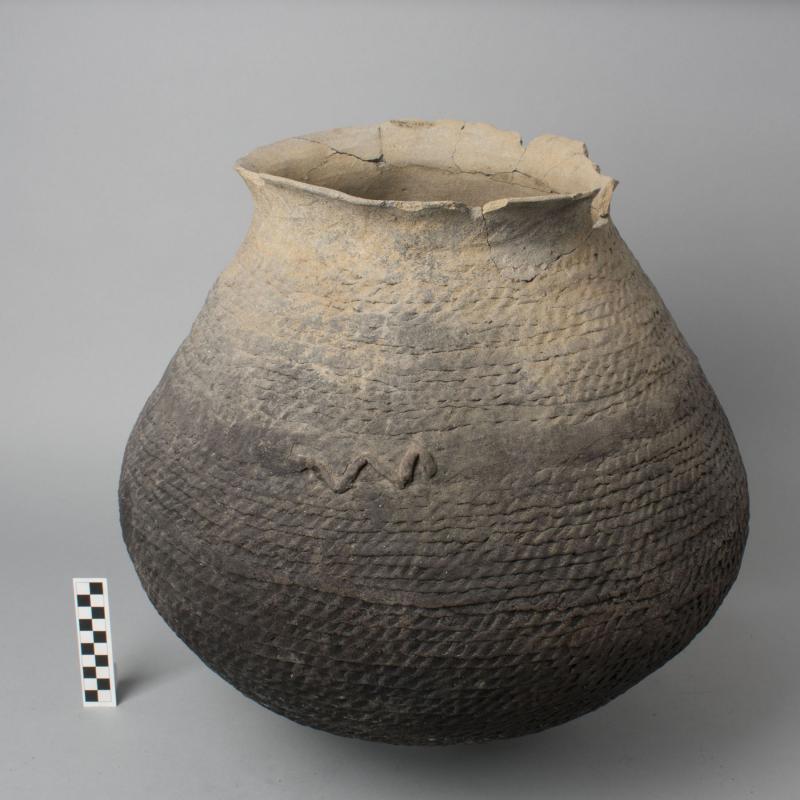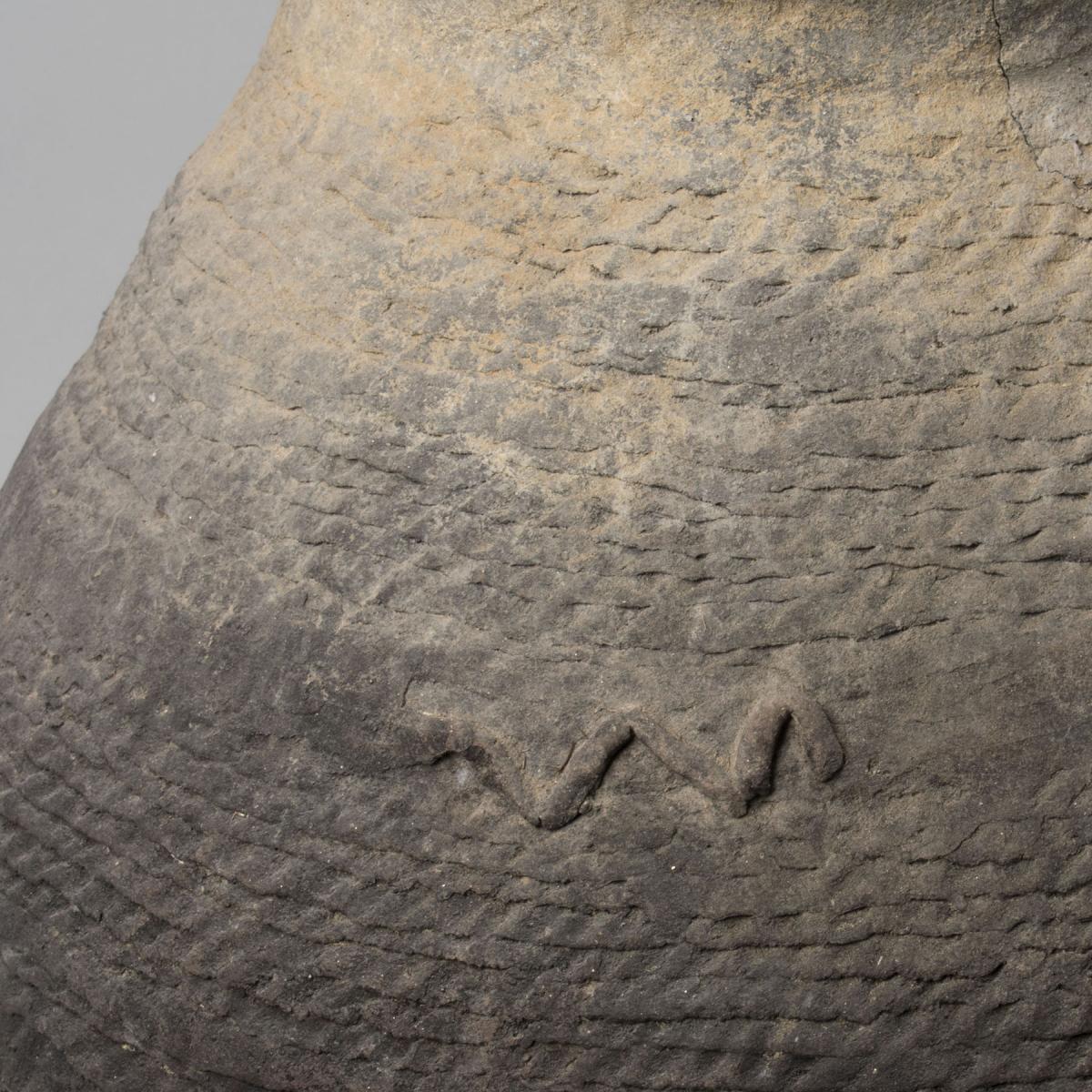Maxwell Museum Blog

This cooking vessel comes from an Ancestral Puebloan site in northern New Mexico. Today’s Pueblo peoples descended from the Ancestral Puebloans, who began constructing compact, multiroom villages (pueblos) following the advent of farming. With farming comes cooking, and this sooted jar shows signs of its past life as a cooking vessel. Potters worked carefully to prevent breakage and maximize efficiency in their cooking pots. Here, the potter left the coiling method of construction exposed, smoothing clay coils on the pot’s interior and leaving the exterior corrugated. Corrugation increases surface area, thereby releasing heat and making it possible to simmer foods longer (like a slow cooker!). Corrugation makes pots easier to hold and inhibits cracking. Corrugation also serves as decoration. This pot is further decorated with curvilinear appliques; these snakelike embellishments might be “water serpents.” In Puebloan culture, the serpent is associated with water—a scarce resource in the Southwest and an important resource for cooking.
Post by Genevieve Woodhead

Image: Large, corrugated Ancestral Puebloan cooking jar & detail
Origin: Box B Site, New Mexico
Dates and Period : Pueblo III period (1100-1300 AD
Division : Archaeology
Maxwell Catalogue # : 88.71.1
Photo Credit : Tom Ocken

